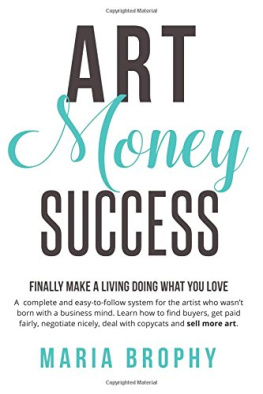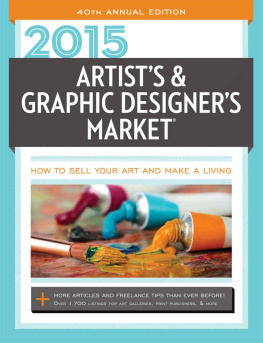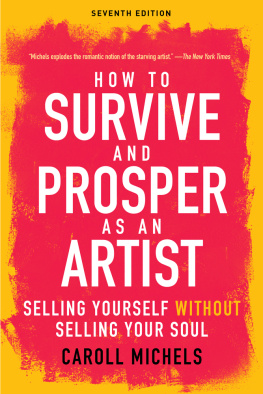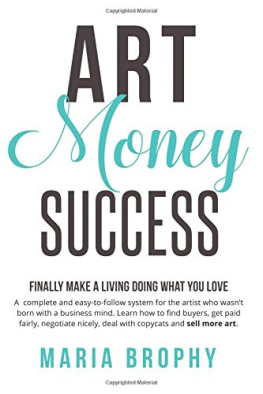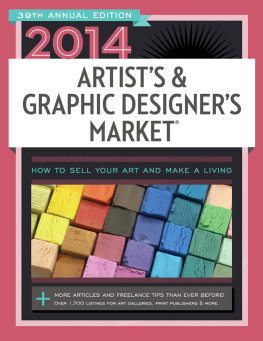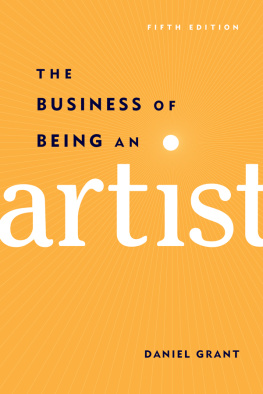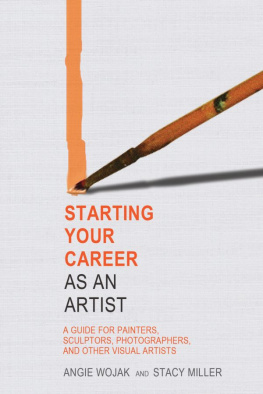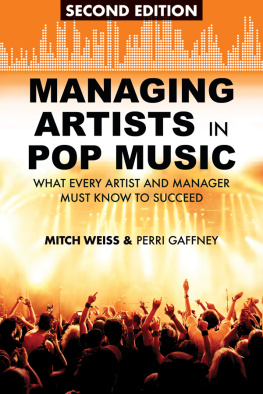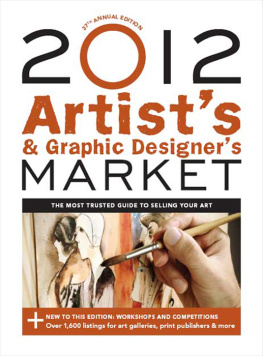The
Business
of Being
an Artist FOURTH EDITION |
The Business of Being an Artist FOURTH EDITION DANIEL GRANT 
|
2010 Daniel Grant
All rights reserved. Copyright under Berne Copyright Convention, Universal Copyright Convention, and Pan-American Copyright Convention. No part of this book may be reproduced, stored in a retrieval system, or transmitted in any form, or by any means, electronic, mechanical, photocopying, recording, or otherwise, without prior permission of the publisher.
14 13 12 11 10 5 4 3 2 1
Published by Allworth Press
An imprint of Allworth Communications
10 East 23rd Street, New York, NY 10010
Cover design by Tamara Gildengers Connolly
Interior design by Tamara Gildengers Connolly
Page composition/typography by Integra Software Services, Pvt., Ltd., Pondicherry, India.
ISBN: 978-1-58115-673-7
eBook ISBN: 978-1-58115-738-3
Library of Congress Cataloging-in-Publication Data
Grant, Daniel.
The business of being an artist / by Daniel Grant.4th ed.
p. cm.
Includes bibliographical references and index.
ISBN 978-1-58115-673-7 (pbk.)
1. ArtUnited StatesMarketing. I. Title.
N8600.G7 2010
706.8dc22 2009039893
Printed in the United States of America
Contents
Introduction
A rtists, like everyone else, enter their careers with certain expectations, realistic or otherwise: perhaps it is a van Gogh-influenced idea that they will produce great work but go unappreciated during their lifetimes; possibly, they see themselves as the next Damien Hirst, earning millions and living the high life, or as the Cindy Sherman of a new generation, keeping critics and theoreticians busy rewriting contemporary art history in the wake of their innovative creations. Underlying all these assumptions is the belief that someone will eventually see their work and recognize what makes it good and unique. Of course, it is better if people see the artwork sooner rather than posthumously, and earning moneydare one say a living?from the art would be nice, too.
The fact is, most artists today are college graduates, many with Masters degrees in their fields, and they expect that their training should lead to something tangible. At times, it may lead them to a related field, such as art conservation or arts administration or art therapy or art teaching, which becomes their identity and life work more than producing artist. Career shifts are not unknown in modern life. What would seem to be disappointing, however, is to end the pursuit of an art careerfor which there has been extensive training and hopes over a period of yearssimply because one doesnt know how to pursue a career in art.
Business and art may seem like unrelated concepts; developing a marketing plan, writing press releases, devising a sales pitch, networking, establishing pricing and discount policies, setting up contractual agreements, applying for loans and funding, licensing, leasing, preparing taxes, and protecting copyright appear to defy the reasons that most people choose to become artists in the first place.
Small wonder, then, that so many artists find themselves needing help understanding how the art world works and how to find their place in it. Some pick up information in the few survival courses offered at various art schools; others hire publicists and advisers to help promote, or give direction to, their work; most others glean what they can from the growing number of business and legal guides for artists that are available these days, or they just improvise.
A strong case can be made for improvising, as there is little rhyme or reason in the way that certain artists become successful while most others do not. All of the hard work of researching galleries, making telephone calls, sending out slides, and developing a portfolio and a long rsum of exhibitions may amount to nothing, while someone right out of art school who happens to know the right person or to be at the right place at the right time is lionized. Luck really cannot be talked about, and talent is not a subject for advice.
Still, throwing up ones hands or waiting for lightning to strike is no answer either. The business side of being an artist means knowing what the options are and making informed choices. Too many artists are unaware that they have choices, or that they have more than one way to achieve successdefined here as the ability to make a living as an artist.
Every known method of attaining career goals has worked for certain artists, failed for others. Therefore, to prescribe a path for successadvising artists to write this sort of letter to a print publisher, sign this type of contract with an art dealer, dress in this manner for a potential corporate buyeris doomed to fail most artists. It makes the most sense for artists to know what the possibilities are for helping themselves, allowing them to improvise but with informed choices.
Each artist has his or her own measure of achievement. To some, that might mean being written up in a textbook or getting work into a major museum collection; perhaps it is being represented by a prominent art gallery or any gallery, or just having ones works displayed somewhere for the public to see. Artists who are starting out are likely to have career objectives different from those of artists who have been working for a number of years.
Poverty, Anas Nin wrote, is the great reality. That is why the artist seeks it. Perhaps poor and undiscovered is another way to define the artist, but an artist with a romantic view of the opposition of art and commerce will find little sustenance in this book. Artists need to understand how the art world operates and develop strategies for carving out a market for themselvesa type of knowledge that is never in fashion. Artists whose aim is to sell their work are still accused of selling out or, to use a more current term, careerism (only in the art world would the idea of establishing a career be viewed with embarrassment and guilt). From art school into the larger society, the myth of the artist as alienated, poor, marginalized, and secretly superior to everyone else, is maintained steadfastly. Sadly, other artists are the most fervent in protecting and enforcing this myth.
Perhaps the worst insult aimed at an artist is Sunday painter, meaning amateur, hobbyist, dabbler, or other words that are also derogatory. An amateur psychologist, for instance, is a busybody, and a Sunday painter competes for refrigerator door space with the children. To be taken seriously as an artist, one must be a professional, but how is that defined? If that means earning ones living through the sale of artwork, the number of people who could call themselves professional artists drops significantly. Most studio art instructors, from the college level on down, probably couldnt support themselves for one month on what they might sell in the course of a year, yet they would insist on seeing themselves as professionals. If the definition depended on how much time during the day or week someone actively creates artwork, a lot of retirees would come out on top. Defining professionalism through membership in an artists association or society would produce a mixed bag of people who earn all, some, or none of their income through art and who have extensive, limited, or no professional training in studio art. The Internal Revenue Service has its own definition, based on earnings and expenditures, because professional artists are permitted to deduct certain costs, such as materials and studio rent, while amateurs and hobbyists may not. The U.S. Bureau of the Census has its own, different definition, based on what an individual worked at as of April first of the decennial year. Among themselves, artists have other ways of making classifications. Defining artist is an unanswerable parlor game, but the question of what makes an artist a professional is a highly contentious issue.
Next page



